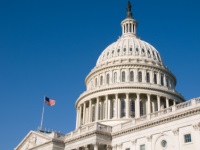A federal court jury in Manhattan returned verdicts on Monday, November 12, largely exonerating the two most senior Reserve Management Company executives in a Securities and Exchange Commission enforcement action accusing them of fraud.
The SEC alleged that Bruce R. Bent, the company’s CEO, and his son, Bruce R. Bent II, the company’s president, as well as their investment advisory firm Reserve Management Co. and Resrv Partners Inc., had defrauded investors and the fund’s trustees by falsely claiming they would support the fund financially when it faced a run by investors after Lehman Brothers’ bankruptcy (the fund held about $785 million in Lehman debt on the day it filed for bankruptcy). The bankruptcy announcement caused investors to flee the fund, leading the fund to “break the buck,” i.e., to have a net asset value (“NAV”) of less than $1 per share. The SEC alleged that, on the morning after Lehman announced its bankruptcy, the Bents falsely assured investors and the trustees that they would use money from their firm to support the $1 NAV.
Following a trial lasting approximately a month, the jury found the elder Bent not liable on all counts and the younger Bent not liable on six of seven counts. The only count on which Bent II was found liable was a negligence-based claim, not the more serious claims that he had “knowingly and recklessly” defrauded investors and the trustees. The jury found the Bents’ two entities liable for the more serious scienter-based fraud charges. The case will now proceed for United States District Judge Paul Gardephe to determine what relief and sanctions, if any, are warranted against the entities and against Bent II for the one negligence-based count on which the jury found him liable. READ MORE



